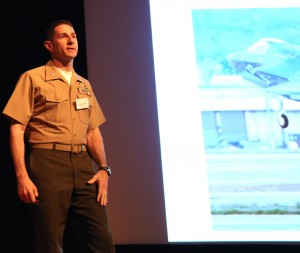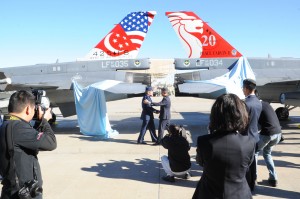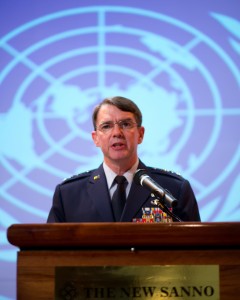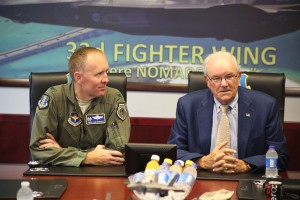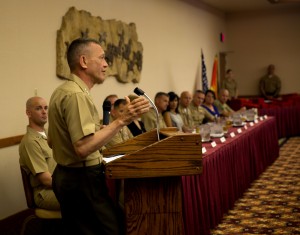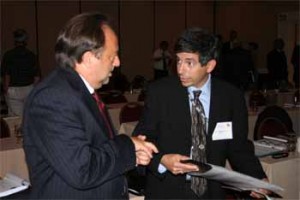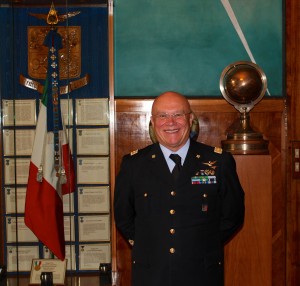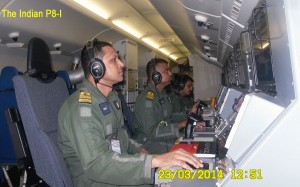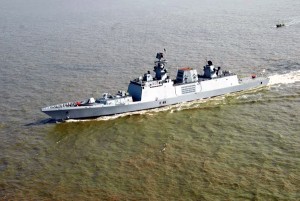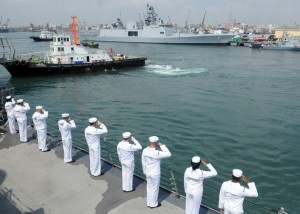2014-09-07 In this exclusive interview conducted by our partner India Strategic with Air Chief Marshal Arup Raha, Chief of the Air Staff, Indian Air Force, the COS provides an overview on how he sees the evolution of Indian Air Power in the joint context.
By Gulshan Luthra and Air Marshal (Retired) VK Jimmy Bhatia
Air Chief Marshal Arup Raha, PVSM, AVSM, VM, ADC, took over as Chief of the Air Staff (CAS) from Air Chief Marshal NAK Browne on December 31, 2013.
Commissioned into the Flying Branch of the Indian Air Force (IAF) in 1974, the CAS has to his credit over 3,400 hors, mostly flown on different types of fighter aircraft. In an exclusive interview with India Strategic (IS) on July 31, 2014, the CAS spoke at length on the IAF’s plans to equip and train itself against the myriad challenges facing the force.
IS: Having completed six months now at the helm of one the largest and battle-tested air forces in the world, what do you reckon are the major challenges facing the Indian Air Force (IAF)? How have you planned to cope with these?
CAS: The application of aerospace power would prove to be the decisive factor in winning the short and intense wars of the future, wherein the response would need to be prompt and precise.
Towards this, IAF envisages a multi-spectrum strategic force capable of addressing the myriad challenges posed by the prevalent security environment.
One of our major challenges is to remain a contemporary aerospace power, which possesses credible capability with a strategic footprint.
The response options so desired would be afforded by our comprehensive transformation plan involving acquisitions, upgrades and efficient management of legacy systems.
Flying training is another focus area where we are systematically building up our capability; both in terms of inducting modern trainers as well as enhancing our overall capacity.

The aircrew need to be capable of handling and operating the modern platforms in multiple roles in a multi-threat environment.
Maximum impetus is also being provided in training and preparing our air-warriors to absorb the intrinsic technologies and maintenance practices therein, in the least possible time.
IS: “The IAF in metamorphic transformation” is an oft-repeated statement, which continues to emanate from different quarters, within and outside the ‘Establishment’.
Do you agree?
If yes, could you elaborate, especially with regard to its concepts and ethos?
Indian Air Force Modernization and Joint Doctrine
CAS: The on-going transformation of the IAF involves a three-pronged approach of ‘Preserve, Upgrade and Acquire.’
All these components are equally important and are included in the Long Term Integrated Perspective Plan (LTIPP) of the IAF which would be progressed as per the envisaged time lines.
The LTIPP clearly lays down the force accretion plan of the IAF which spans the entire spectrum of IAF’s capability building including fighters, transport ac, helicopters, combat support assets and modernization of air defense network.
Net centricity, cyber security, and ensuring requisite communication bandwidth for seamless operations are also part of this capability.
Space is increasingly being integrated into our day-today operations to give us the winning edge in any contingency.
In order to absorb these new capabilities more efficiently, a time-bound and comprehensive infrastructure upgrade plan has been instituted which focuses on creating modern operational and technical facilities.
It would however, be difficult to give a definitive date or year to say that the ‘IAF has Transformed’.
I am sanguine that the metamorphic transformation process is progressing well and we are already witnessing early results with comprehensive enhancement of our capabilities.
As we build new operational capabilities, our concepts of conducting various types of air campaigns are also evolving.
It is a continuous process and our ethos, professionalism and leadership would be the real catalysts in effectively harnessing the enhanced capabilities.
IS: What are the key ingredients of the IAF’s latest doctrine? Does it mesh well with the joint ‘Sea-Air-Land Doctrine’ of the three services?
Please elucidate.
CAS: Joint operations would be the key to success in any future military operation.
The realms of sea, land, air, space and cyber would need to be exploited seamlessly for effective and efficient operations.
Developing and articulating a doctrine is only the first step towards complete integration. The Joint Doctrine of the Indian Armed Forces lays down the fundamental principles by which we employ our joint war-fighting capabilities to conduct successful military operations.
The IAF is completely ‘in-sync’ with the Joint Doctrine. Processes related to procurements and training have already been synergized to a great extent.
Operational Integration is an on-going process and we continue to improve upon it with every exercise especially in operationalizing new weapon systems. Moreover, it is the understanding of each other’s roles, capabilities and core competencies that will enable us to always choose the right option to further our national interest.
As regards the IAF Doctrine; it articulates the Vision, Mission and Core values of the IAF, and puts Indian aerospace power in the right perspective. It highlights the need for all, to understand the roles and responsibilities of the IAF.
The potency and lethality of air power has increased tremendously and it provides a wide spectrum of choices to decision makers in any contingency, both in peace and war.
The Doctrine emphasizes the importance of joint operations and the increasing role of air power as a tool of nation-building.
The stellar role played by IAF in the smooth conduct of recent Lok Sabha elections through extensive airlift of officials, equipment and security personnel as well as record-setting HADR (Humanitarian Aid and Disaster Relief) operations in Uttarakhand last year are fine examples of IAF’s contribution in nation-building.
The Doctrine is forward looking in its appreciation of the air and space paradigm; and the significance of information warfare in transforming future military operations.

IS: Notwithstanding various alarmist views being aired from time to time in the media, could you give an update on the current status of the IAF’s combat squadrons’ strength?
Would the IAF be in a position to reach the oft-stated strength of 42 jet fighter squadrons by the end of the 13th Plan (2022)?
CAS: The IAF’s present strength of fighter squadrons falls short of the sanctioned strength of combat squadrons. IAF has several legacy squadrons of MiG-21 and MiG-27 which will retire over the next decade.
Therefore, early induction of LCA and MMRCA has been planned for arresting the drawdown in the strength of fighter squadrons. IAF is likely to have its sanctioned strength of combat squadrons operational sooner than later.
The MMRCA Acquisition
IS: What is the latest on the long pending MMRCA deal?
Is there a possibility of the contract being signed in the current financial year? If yes, when would the IAF likely get its first squadron of Rafale jet fighters?
CAS: The MMRCA CNC is presently negotiating various aspects of the contract with the L1 vendor, Dassault Aviation of France. The negotiations are progressing well. The contract for 126 MMRCA is expected to be signed sooner than later in the current FY 2014-15.
IS: In the interim, is there a possibility of the IAF going in for additional Mirage 2000 aircraft as being reported in some sections of the media? Please clarify.
CAS: To make good the existing deficiencies in the Mirage-2000 fleet, a case for procurement of two additional Mirage 2000 aircraft is being initiated by the Air HQ.
IS: Could you give a detailed update on the indigenous LCA (Tejas) program?
When would the aircraft be in a position to achieve full-fledged FOC (Final Operational Clearance)? How will the issue of the first 40 LCAs fitted with the underpowered GE 404 IN engines be sorted out in the long run? Will these be retro modified to Mk II standards or the IAF would remain saddled with Mk Is through their entire service life? Could you also give details of the LCA Mk II aircraft are envisaged for procurement by the IAF?
Other Tactical Aircraft Modernization
CAS: The LCA achieved IOC in December 2013 and this paved the way for induction of the LCA in IOC configuration in IAF. HAL is likely to deliver the first LCA in 2014 and IAF will be in a position to form the first LCA squadron only after receipt of at least four LCA from HAL, which is likely by the third quarter of 2015. The FOC of LCA is scheduled in December 2014.
The first 40 LCA would fly with GE 404 IN engine. The LCA Mk II would be equipped with GE 414 INS6 engine with improved performance. Preliminary Design Review of LCA Mk II was conducted. Four Squadrons of LCA Mk II are envisaged for procurement.
IS: It is believed there is a possibility of the stalled Jaguar re-engining programme being revived. Is it true? If yes, could you give details of the program? How will it affect the overall service life of the aircraft?
CAS: Yes, a case for re-engining of the Jaguar aircraft with F-125 IN engine is being actively pursued. Presently, the case is at Technical Oversight Stage, after which the contract negotiations will commence and we are hopeful of signing the contract in this financial year. Re-engining and concurrent upgrade of the Jaguar fleet will ensure its operational relevance till 2035.
IS: What are your views on the – still on the drawing board – indigenous MCA (Medium Combat Aircraft) program? How does it fit in the already crowded fighter acquisition programs such as the MMRCA, FGFA and of course the LCA too? Also, what time horizons have been fixed for its operational induction into the IAF?
CAS: After having successfully developed the LCA indigenously, the next logical step for DRDO is to design and develop an indigenous medium category fighter aircraft which would replace some of our legacy fleets due to retire in 10-15 years time. Presently MCA is on the drawing board and it is too premature to draw out its induction timelines.
Additional Air Modernization Efforts
IS: The IAF is in the hunt for augmenting its meager resources of force-multiplier aerial platforms such as AWACS, FRAs, etc.
Could you give details of the various programs? Also, how well is the indigenous AEW&C program progressing?
Your comments please.
CAS: To ensure the requisite degree of air surveillance and achieve air dominance in future operations, IAF needs to have adequate on-station capability in its Area of Interest.
Towards this, IAF has already taken the first step of operationalizing three AWACS, procured from abroad. Indigenous development of AEW&C by DRDO is in the developmental flight trials stage. These would be inducted in IAF after the trials are successfully accomplished.
To leverage the experience and expertise gained in the Design & Development of AEW&C, a project for indigenous development of AWACS has been initiated. The project is envisaged in two phases. Phase I involves development of a prototype, followed by a mid-term review by a National Review Committee.
Based on the success of Phase I of the indigenous AWACS, Phase II for production of additional AWACS will be initiated.
IS: Could you give an update on the IAF’s endeavours to improve its ground-based air defence capabilities? How well are the comparatively recently inducted Akash and Spyder SAM systems performing? Also, what is the progress on the India-Israel joint MR-SAM programme? Please elucidate.
CAS: A number of ground based defense capability projects are in progress. These include Akash, Spyder, MRSAM, SRSAM and VSHORAD. A number of Akash squadrons have already been operationalised in the IAF and several more squadrons will be inducted soon.
A few Squadrons of SPYDER LLQRM have also been contracted. Delivery of the SPYDER system is likely to commence shortly. Design, development and production of MRSAM jointly by DRDO and OEM from abroad is progressing well. A case for joint procurement of VSHORAD, for all three services is being processed.
IS: Armed UAVs are increasingly becoming the weapons of choice in the conduct of conventional/sub-conventional wars including the GWOT (Global War on Terrorism).
Does the IAF – which had pioneered the acquisition and operational exploitation of UAVs in the Indian context – have any plans to acquire UCAVs in the near future?
What is the IAF’s long-term vision of acquiring a mix of unmanned/manned combat systems to fight the future wars?
CAS: UAVs offer a cost-effective solution for reconnaissance and surveillance and the developments in sensors and communication technologies are providing immense capabilities to these platforms.
It is natural to extend their utilization for the armed role. UCAV technologies are available only to a few countries and are still in development phase. It will take some time for UCAV technology to mature and harden so that they can be integrated in the battle-space.
A careful cost-benefit analysis is essential before selection of any equipment for induction.
The IAF is studying these systems and is looking at the option of inducting such technology in future.
IS: The recent inductions of C-17 Globemaster III and C-130J transporters have metamorphosed the IAF’s strategic/ tactical and Special Operations capabilities.
Your comments please.
What will be the ultimate size of these fleets once IAF gets to meet all its ongoing and planned acquisition demands?
CAS: The induction of C-17 and C-130J has brought about a paradigm shift in our airlift capabilities.
The exceptional capabilities of the C-17 aircraft have enhanced our strategic footprint, which impacts the concept of Strategic Airlift Operations. Though the process of operationalizing the fleet is still in progress, it has already displayed potential by undertaking operations in support of the UN Mission in Congo and the Government of Tajikistan.
The C-130 has flown with us for three and a half years and has emerged as a significant enabler for Special Operations, besides being extensively deployed for varied tasks.
More importantly, these platforms have significantly enhanced our responsiveness in carrying out HADR operations.
We have inducted five C-17 and C-130J aircraft each and expect to induct more of these platforms as we gain more experience in their utilization and expand upon the roles. Induction of the balance five C-17 will be complete by the year-end while six additional C-130J aircraft are scheduled to be inducted by 2016.
IS: How is the IAF coping up in the aftermath of the stalled/cancelled VVIP helicopter program?
Does the IAF have a ‘Plan B’ to ensure safe and efficient rotary wing capability to meet the VVIP/VIP requirements?
Please explain.
CAS: The IAF has initiated a case in consultation with concerned agencies for modifying a few Mi-17 Series helicopters, for safe and efficient conduct of VVIP operations. However, this is only an interim measure.
IS: The IAF appears to be highly satisfied with the performance of the Pilatus PC-7 Mk II basic trainer aircraft and its availability on the tarmac – implying much better sustained serviceability states – and; would like to acquire more of the same to cater to its ever-increasing requirements of ab-initio flying training, and to ensure standardization.
But HAL is reportedly going ahead with its HTT-40 BTA program. Could you please explain in detail as to how the IAF plans to resolve the emerging conflicting situation and what would be its future plans?
CAS: The performance of PC-7 Mk II as a basic flying trainer has met the long aspired requirements of the IAF. The average serviceability of Pilatus PC-7 Mk II has been exceptional and the OEM is providing proactive product support for maintaining enhanced serviceability of the fleet.
Within a short span of just over a year, IAF has completed the basic flying training of almost 200 pilots utilizing this platform. The fleet has already flown more than 15,000 hours and executed over 25,000 landings.
The total requirement of IAF for the BTA as approved by the Government is 181.
The HTT-40 project does not meet the delivery timeline requirements of IAF. A RFI related to procurement of additional PC-7 through ‘Buy and Make (Indian)’ route has been floated to make good the BTA shortfall. The case will be processed thereafter, based on responses to the RFI.
IS: What is the progress on the much delayed IJT program under way at the HAL? It is believed that IJT suffers from serious asymmetric stall problems, which cannot be solved without redesigning the aerodynamic shape of the aircraft. Is it true? Your comments please. In the worst case scenario, if the IJT fails to deliver, what would be the IAF’s fallback position?
Please explain.
CAS: The IJT was sanctioned in 1999 with an aim to achieve IOC by 2004. However, there are certain critical D&D issues, which are being resolved by HAL through consultancy. We are closely monitoring the progress of the IJT project in view of the impending retirement of Kiran aircraft. IAF is hopeful that the IJT will mature before the Kiran fleet starts retiring in very near future.
Indian Armed Forces and Procurement
IS: What are your views on the Naresh Chandra Committee’s recommendation of creating a new post of Permanent Chairman Chiefs of Staff Committee (COSC)? It has been often stated the proposal has been hanging fire because of the IAF’s reluctance for its implementation in its present form.
What would happen if the recommendation finds favor with the new political dispensation?
What in your opinion should be done to create the necessary conducive environment for its creation and what should be the overall responsibilities of the new functionary?
CAS: The creation of CDS is an incremental process and therefore, deserves to be supported by the three Services & other agencies. As against the misplaced perception of its reluctance, the proposal to create the appointment of Permanent Chairman COSC by the Naresh Chandra Task Force has been concurred by IAF.
As per its recommendations, the Chairman COSC would be one of the three Service Chiefs appointed by the Government and be the single point contact between the Government and three Services. He would thus be the fourth four star officer who would also be responsible for the various Tri-Service Commands.
The Service Chiefs will continue to exercise operational control and staff functions over their respective Service and have direct access to RM. The proposed set up will allow HQ IDS under Chairman COSC to function as an effective advisory nodal agency to the government on matters of policy, joint acquisitions, joint capability building and training.
A full switch over to CDS concept would be possible, only after assessing the functioning of Permanent Chairman COSC for some time.
IS: There is a view that even after years of revising it, the DPP (Defence Procurement Policy/Procedure) continues to be extremely complicated and needs to be simplified. One good thing which has happened though is the eligibility of ToT (Transfer of Technology) in discharging ‘Offset’ obligations. Has it helped in accelerating the commercial negotiations/processes underway, such as the Rafale deal?
Your comments on both please.
CAS: The Defence Procurement Procedure (DPP) has not just streamlined the entire Capital Procurement process; it has also catered to the ever-increasing requirement of transparency in the procurement process. At times the procedures appear to delay the procurement timelines rather than reducing them, but the overall effect is that it has led to a better understanding of the processes involved and brought in the much needed standardization amongst the procedures followed by the Services.
The DPP is also evolutionary in nature; feedback from the environment and stakeholders is regularly considered and procedures amended to include suggested improvements. The revised offset guidelines permit greater flexibility for discharge of offset obligations. This will allow offset contracts to progress in a more effective manner.
The MMRCA procurement is being progressed under DPP 2006, under which Transfer of Technology (ToT) is not eligible towards discharge of ‘Offset’ obligations.
IS: The IAF has been one of the foremost proponents of the idea that aerospace industry in India cannot be managed as just a public sector endeavour, but needs to be integrated with private sector in a meaningful way to ultimately achieve the goal of self-reliance. What more does the IAF need to do to realise the stated objective? Has the IAF also put itself in the driving seat to determine what cuttingedge technologies it wants from the concerned sectors to achieve the desired operational capabilities?
Your comments please.
CAS: The Defence Production Policy, which has been put in place by the Government, espouses the cause of the indigenous defense industry, including the private sector, and is one of the major steps towards achieving self-reliance. While initiating the proposals for any new acquisitions, it is ensured that the inherent capability of the Indian defense industry is taken cognizance of, before looking at the external market.
The provisions of Transfer of Technology and Offsets as enshrined in the Defence Procurement Procedure (DPP) also go a long way in ensuring that the indigenous industry (both public as well as private) get the required fillip to compete with the international players thereby leading to self-reliance.
Future Technology Perspective and Capability build up roadmap has been clearly carved out by the IAF.
We regularly interact with the Indian Private and Public industries and apprise them of critical technologies which need to be brought into the country. IAF has forwarded RFI to CII, FICCI, ASSOCHAM to identify private industries capable and interested in IAF’s procurement for Air-to-Air and Air-to-Surface Weapons, SAGW, radars and EW equipment.
In addition, IAF wants rotor blades for Mi-17 helicopters to be produced within the country for which we have recently written to Indian Private Industry Associations. Given the growth of Indian Aviation sector both military and civil, we feel that for holistic and inclusive growth of Defence Industrial Base, Public and Private sectors need to grow together complementing and supplementing each other. We have always been supportive of indigenous development, without sacrificing our combat potential.
Indian Armed Forces Reforms
IS: Advanced armed forces the world over continue to open new operational roles for women, the latest being the induction of women officers in the submarine cadre of the UK’s Royal Navy. What is the likelihood of IAF’s women pilots flying in combat roles in the near future? Also, is there a move to grant permanents commissions to women pilots?
CAS: Presently, women officers of all the three Services are not being deployed on active duty close to the border wherein they are likely to be exposed to direct line of fire of the enemy/ engaged in operations across the border. IAF has opened up all branches for induction of women as SSC officers except for fighter stream of Flying Branch. The probability of women pilots flying in combat roles in the near future is very bright. Permanent Commission has been granted to a large number of SSC women officers in the recent past.
AVSC-II had recommended a larger number of officers in SSC cadre and had limited the number in PC cadre in all three Services; primarily to reduce the stagnation at higher ranks and to improve career prospects. Recommendations of AVSC are being implemented and the IAF has decided to have a balanced mix of PC officers and SSC officers.
IS: Lastly, a standard question: What are the newer technologies being inducted by the IAF to cut down the size of the sensor-shooter loop – a never ending quest for any air force?
CAS: The induction of state-of-art combat platforms like FGFA and MMRCA as well as the ongoing upgradation of existing combat platforms would enable us to keep pace with the newer technologies which include long range multi-function radars, superior man-machine interface, high performance mission computers with data link, state-of-the-art electronic warfare systems, smart weapons and stealth capability.
IAF endeavors to seamlessly integrate maximum number of sensors, platforms and systems in the Integrated Air Command Control System (IACCS) network. Coupled with space assets and RPAs this network would afford us ‘High Situational Awareness’ in a ‘Network Centric’ environment. Enabled by ICT, the network would reduce the sensor to shooter time considerably.
Reprinted with permission of our partner India Strategic:
http://www.indiastrategic.in/topstories3514_Interview_Air_Chief_Marshal_Arup_Raha.htm
And for an earlier piece IAF modernization see the following:
http://sldinfo.wpstage.net/an-update-on-the-indian-air-force-the-coming-of-rafale/
For a PDF of the original article in India Strategic see the following:




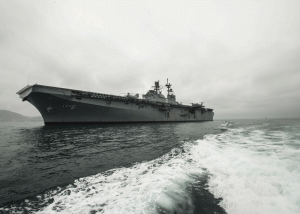
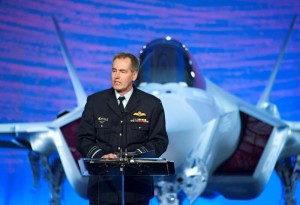
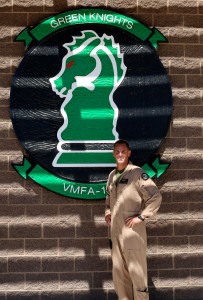
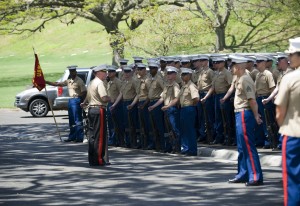
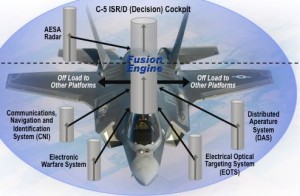
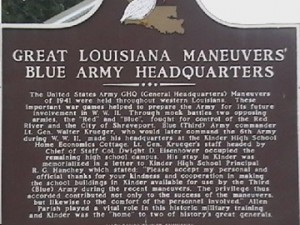
![George S. Patton - Tennessee [Louisiana] Maneuvers with Gen. Patton's 2nd Armored. Tennessee [Louisiana] Maneuvers with Gen. Patton's 2nd Armored](https://sldinfo.com/wp-content/uploads/2014/09/Screen-Shot-2014-09-05-at-11.08.40-AM-300x253.png)
